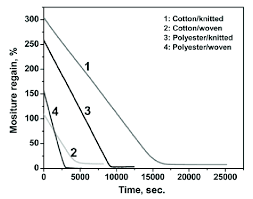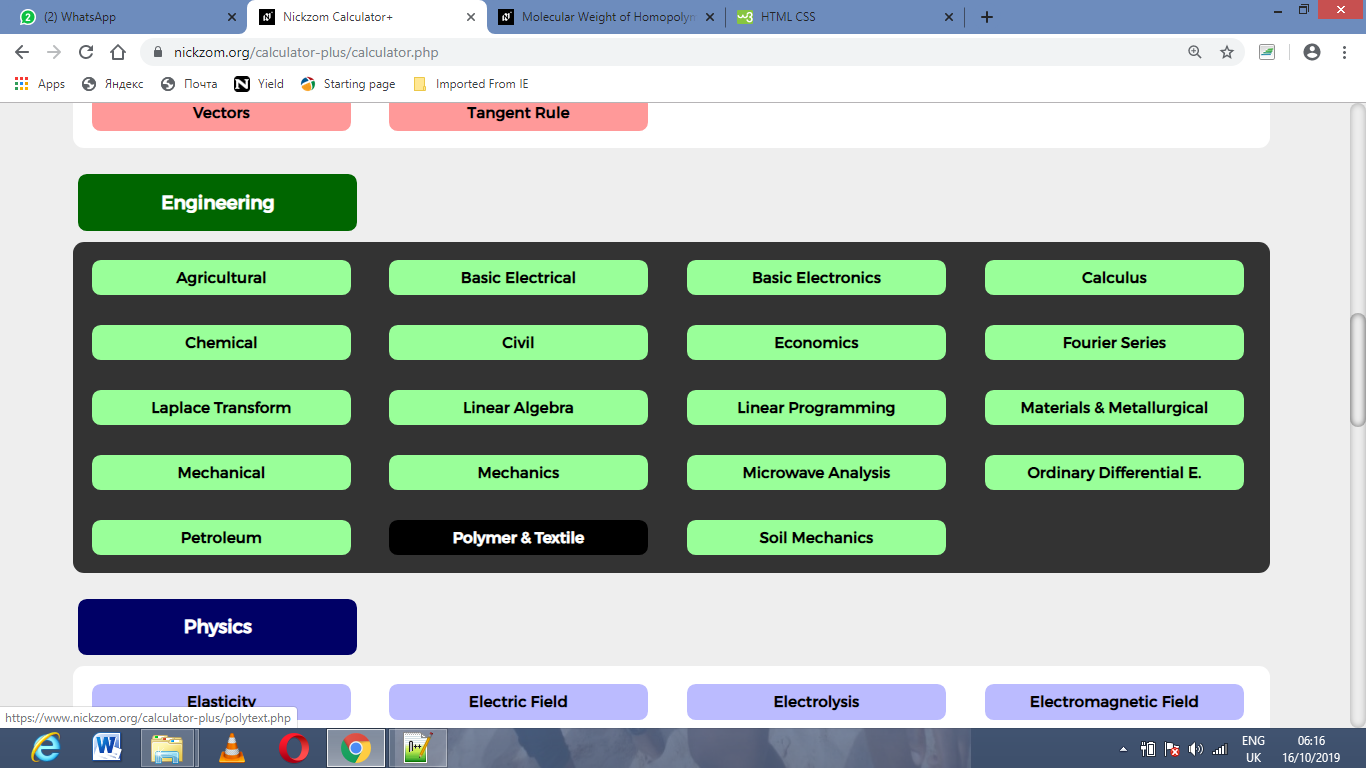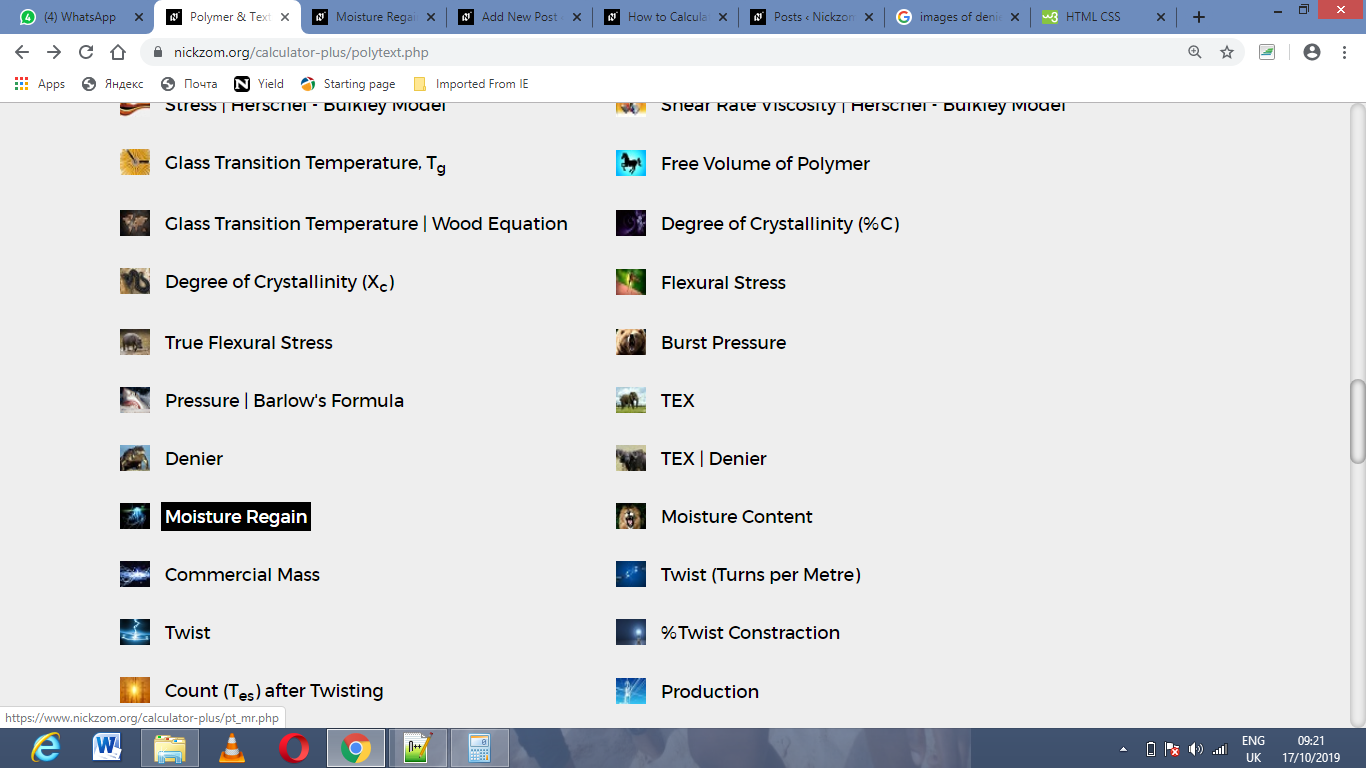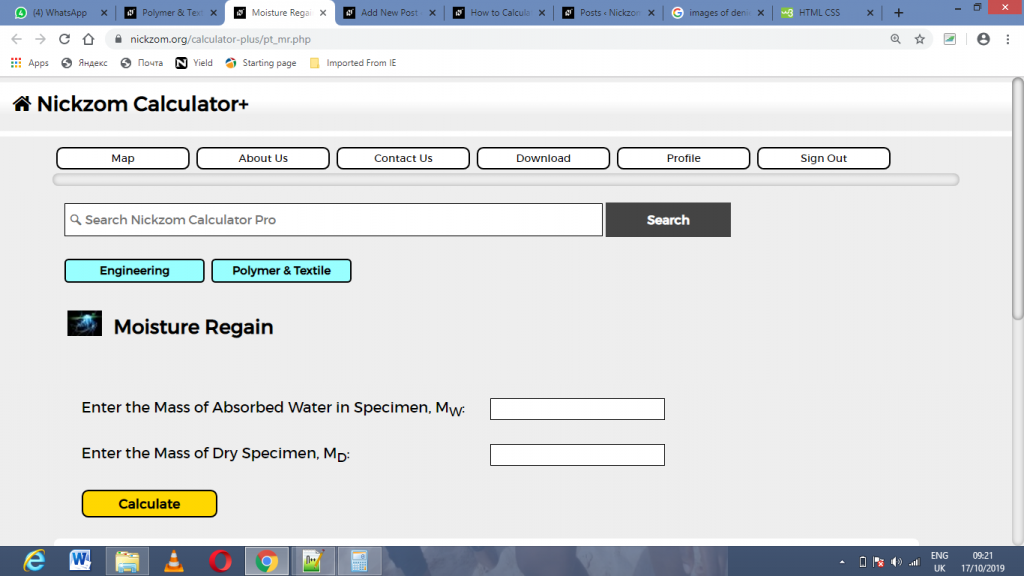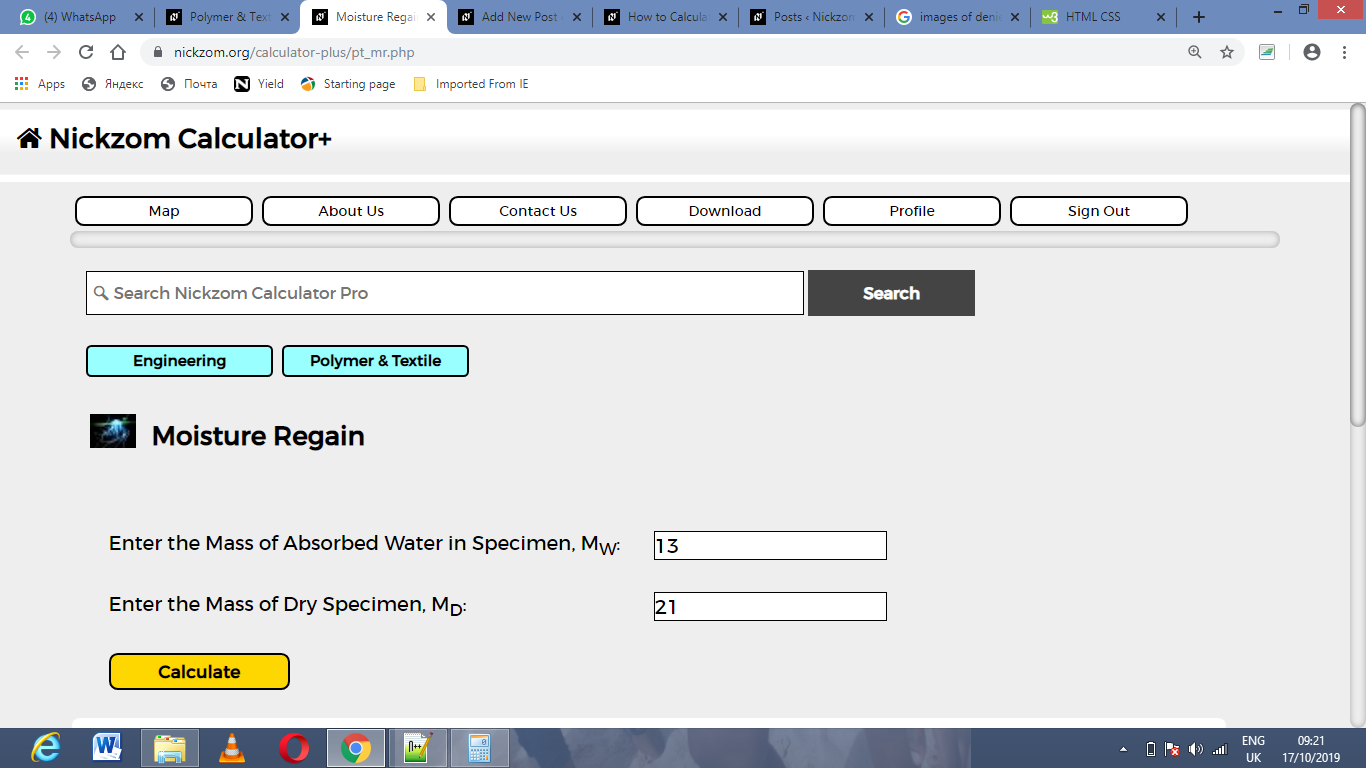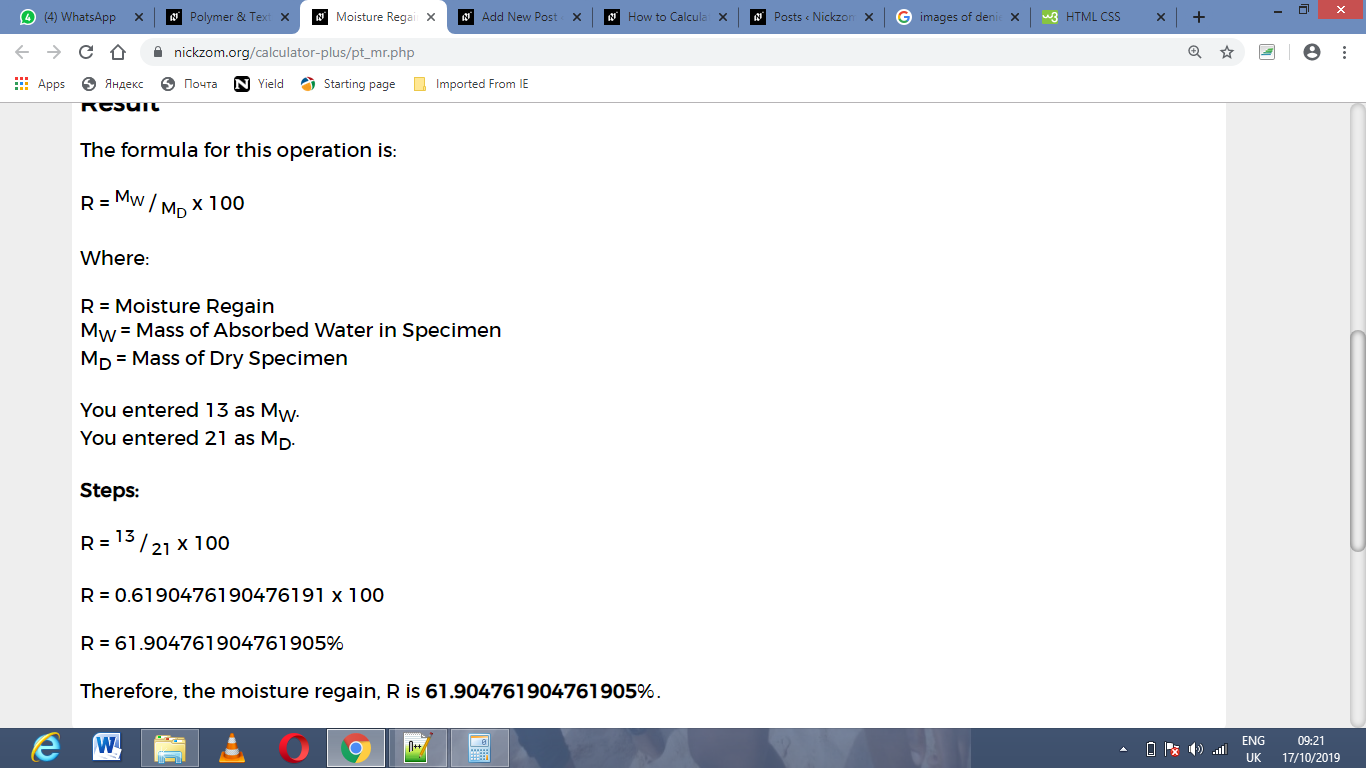The image above represents the moisture regain. To calculate moisture regain, two essential parameters are needed, and these parameters are mass of absorbed water in specimen (MW) and mass of dry specimen (MD).
The formula for calculating moisture regain:
R = MW / MD x 100
Where;
R = Moisture Regain
MW = Mass of Absorbed Water in Specimen
MD = Mass of Dry Specimen
Let’s solve an example;
Find the moisture regain when the mass of absorbed water in specimen is 13 and the mass of dry specimen is 21.
This implies that;
MW = Mass of Absorbed Water in Specimen = 13
MD = Mass of Dry Specimen = 21
R = MW / MD x 100
So, R = 13 / 21 x 100
R = 0.619 x 100
R = 61.90
Therefore, the moisture regain is 61.90%.
Calculating the Mass of Absorbed Water in Specimen when the Moisture Regain and the Mass of Dry Specimen are Given
Mw = RMD / 100
Where;
MW = Mass of Absorbed Water in Specimen
R = Moisture Regain
MD = Mass of Dry Specimen
Let’s solve an example;
Find the mass of absorbed water in specimen when the moisture regain is 14 and the mass of dry specimen is 11.
This implies that;
R = Moisture Regain = 14
MD = Mass of Dry Specimen = 11
Mw = RMD / 100
Then, Mw = 14 x 11 / 100
Mw = 154 / 100
Mw = 1.54
Therefore, the mass of absorbed water in specimen is 1.54.
Read more: How to Calculate and Solve for Part Shrinkage Ratio | Polymer & Textile
Calculate the Mass of Dry Specimen when the Moisture Regain and the Absorbed Water in Specimen are Given
MD = Mw x 100 / R
Where;
MD = Mass of Dry Specimen
R = Moisture Regain
MW = Mass of Absorbed Water in Specimen
Let’s solve an example;
Find the mass of dry specimen when the mass of absorbed water in specimen is 15 and the moisture regain is 30.
This implies that;
R = Moisture Regain = 30
MW = Mass of Absorbed Water in Specimen = 15
MD = Mw x 100 / R
So, MD = 15 x 100 / 30
MD = 15000 / 30
MD = 500
Therefore, the mass of dry specimen is 500.
How to Calculate Moisture Regain Using Nickzom Calculator
Nickzom Calculator – The Calculator Encyclopedia is capable of calculating the moisture regain.
To get the answer and workings of the moisture regain using the Nickzom Calculator – The Calculator Encyclopedia. First, you need to obtain the app.
Master Calculations Instantly
Unlock solutions for math, physics, engineering, and chemistry problem with step-by-step clarity. No internet required. Just knowledge at your fingertips, anytime, anywhere.
You can get this app via any of these means:
Web – https://www.nickzom.org/calculator-plus
To get access to the professional version via web, you need to register and subscribe for NGN 1,500 per annum to have utter access to all functionalities.
You can also try the demo version via https://www.nickzom.org/calculator
Android (Paid) – https://play.google.com/store/apps/details?id=org.nickzom.nickzomcalculator
Android (Free) – https://play.google.com/store/apps/details?id=com.nickzom.nickzomcalculator
Apple (Paid) – https://itunes.apple.com/us/app/nickzom-calculator/id1331162702?mt=8
Once, you have obtained the calculator encyclopedia app, proceed to the Calculator Map, then click on Polymer & Textile under Engineering.
Now, Click on Moisture Regain under Polymer & Textile
The screenshot below displays the page or activity to enter your values, to get the answer for the moisture regain according to the respective parameters which are the mass of absorbed water in specimen (MW) and mass of dry specimen (MD).
Now, enter the values appropriately and accordingly for the parameters as required by the mass of absorbed water in specimen (MW) is 13 and mass of dry specimen (MD) is 21.
Finally, Click on Calculate
As you can see from the screenshot above, Nickzom Calculator– The Calculator Encyclopedia solves for the moisture regain and presents the formula, workings and steps too.
